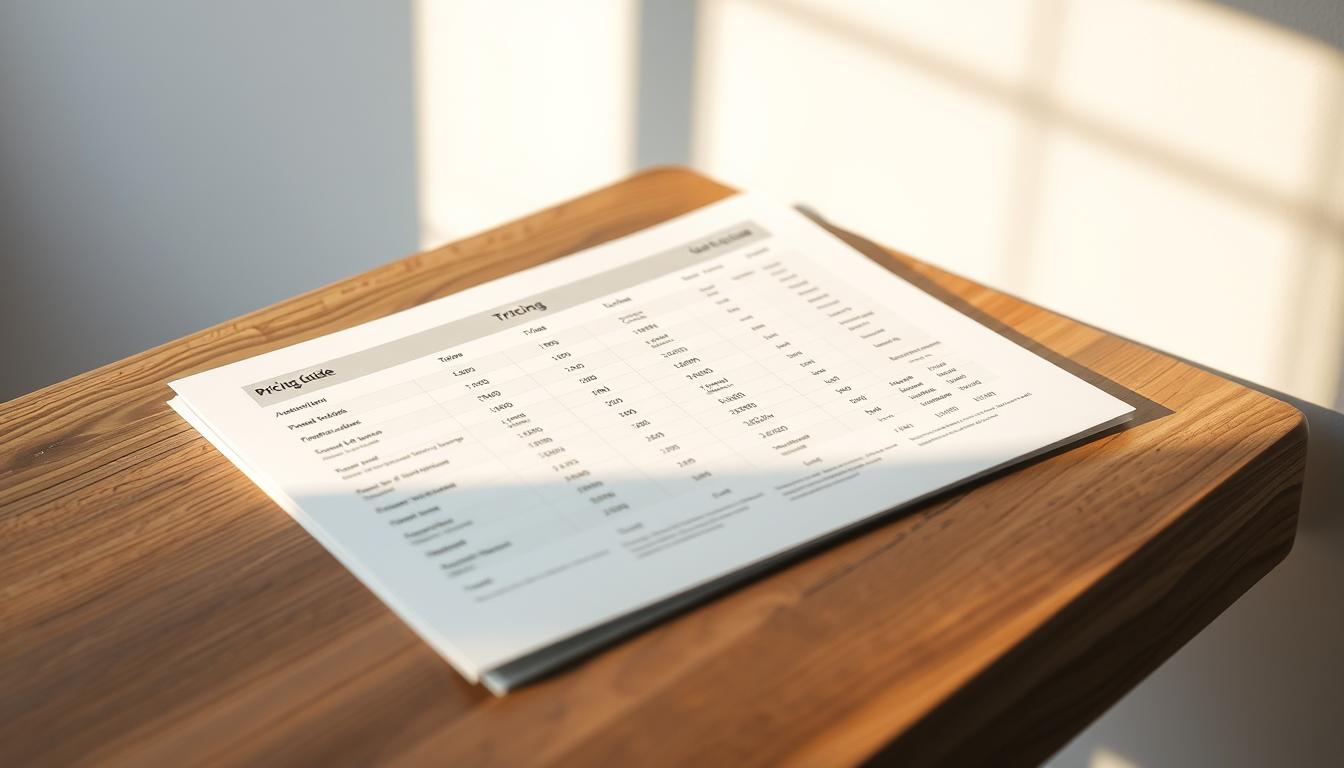
What if your dream tattoo costs more than your monthly rent? Body art has transformed from ancient traditions to modern self-expression, but one question remains: why does pricing vary so wildly? Whether you’re planning your first ink or adding to your collection, understanding the true cost involves more than guessing.
Tattoo pricing isn’t just about size or design complexity. Artists factor in time, expertise, and even studio overhead. A small wrist tattoo might seem simple, but intricate linework or color blending can double the price. Regional differences also play a role—urban studios often charge more than rural ones due to higher operating costs.
Quality matters. Skilled artists invest years mastering their craft, and their rates reflect that experience. Bargain hunting might save money upfront, but corrections or cover-ups cost more later. Modern tattooing blends artistry with hygiene standards, ensuring your investment stays vibrant and safe.
Key Takeaways
- Multiple factors shape tattoo costs, including design complexity and artist skill level
- Geographic location significantly impacts pricing variations
- High-quality work often justifies higher upfront costs
- Studio reputation and safety protocols influence overall value
- Budgeting requires balancing personal preferences with realistic expectations
Understanding Tattoo Pricing Structures
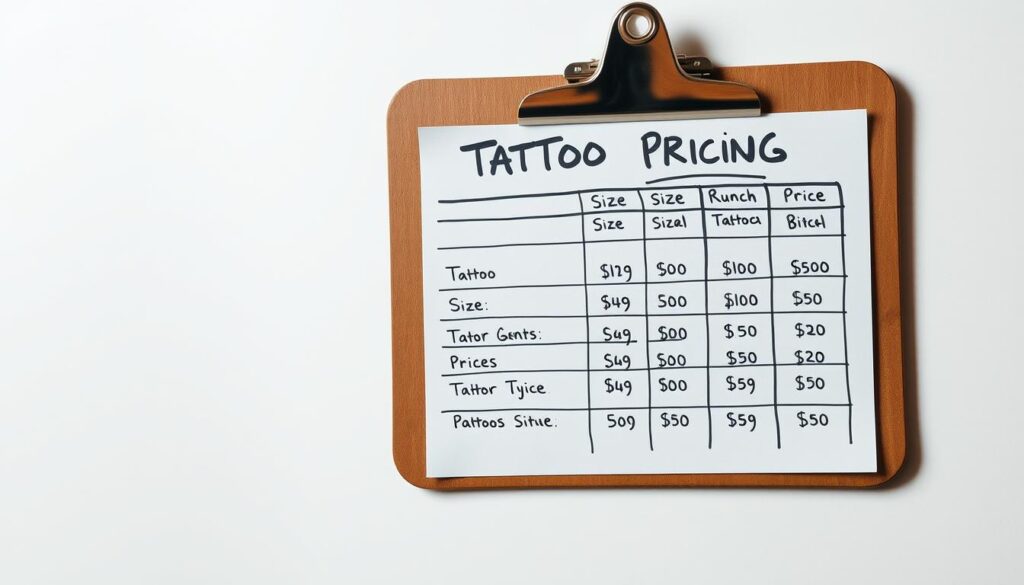
Decoding tattoo costs starts with knowing how artists set their rates. Three primary models shape your final price: hourly billing, flat fees, and per-project agreements. Each method serves different needs, whether you’re getting a sleeve or a subtle symbol.
When Time Meets Complexity
Hourly rates dominate for elaborate projects. Artists charging $150-$500/hour account for shifting timelines with detailed designs. A floral back piece might take 15 hours, while portrait work could double that. Pro tip: Ask for time estimates during consultations to budget effectively.
Predictable Pricing for Simpler Designs
Flat rates shine for pre-drawn flash art or minimalist concepts. You’ll pay $50-$300 upfront for a defined outcome—no clock-watching. This model works best when dimensions and colors stay simple. Some studios combine both methods, using hourly rates for revisions.
The Non-Negotiable Baseline
Every shop enforces minimum charges ($50-$100), even for tiny ink. This covers sanitation protocols, needles, and prep work. Want a comma-sized symbol? You’re still paying for the artist’s expertise and sterile environment. Always confirm policies before booking—some add fees for stencils or color changes.
Factors Influencing Tattoo Costs
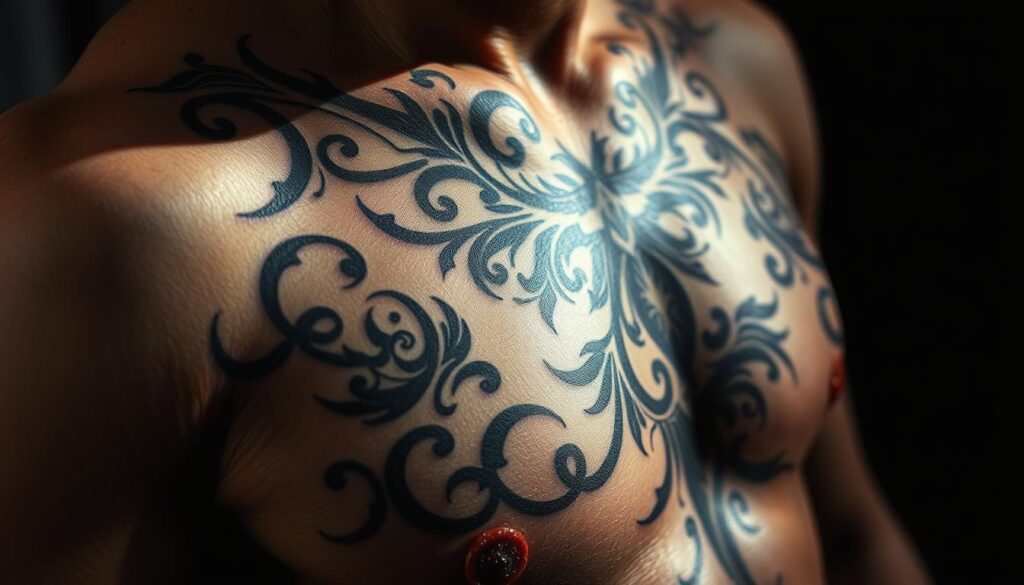
Your tattoo’s final price tag reveals more than just ink on skin—it’s a map of artistic challenges and physical demands. Let’s explore why two seemingly similar designs can have wildly different costs based on technical factors.
Size, Complexity, and Detail
Size dictates the canvas, but complexity determines the labor. A palm-sized geometric pattern costs less than a full-color sleeve, even if both cover similar surface areas. Intricate elements like photorealistic textures or micro-detailing demand meticulous precision, often doubling the work hours.
Fine linework and shading techniques push artists to their limits. “A single shaky hand movement can ruin hours of progress,” explains a veteran ink specialist. These high-stakes details justify higher rates, as they require specialized training and additional time to perfect.
Body Placement and Pain Considerations
Where you choose to get inked impacts both your comfort and wallet. Bony areas like collarbones or ankles test an artist’s ability to maintain clean lines on uneven surfaces. Sensitive zones near nerve clusters may require shorter sessions with more breaks, stretching the timeline.
Experienced professionals often charge premium rates for challenging placements. Ribcage art, for instance, combines technical difficulty with client pain tolerance—factors that elevate both skill demands and studio preparation costs.
How Much Are Tattoos: Breaking Down the Numbers
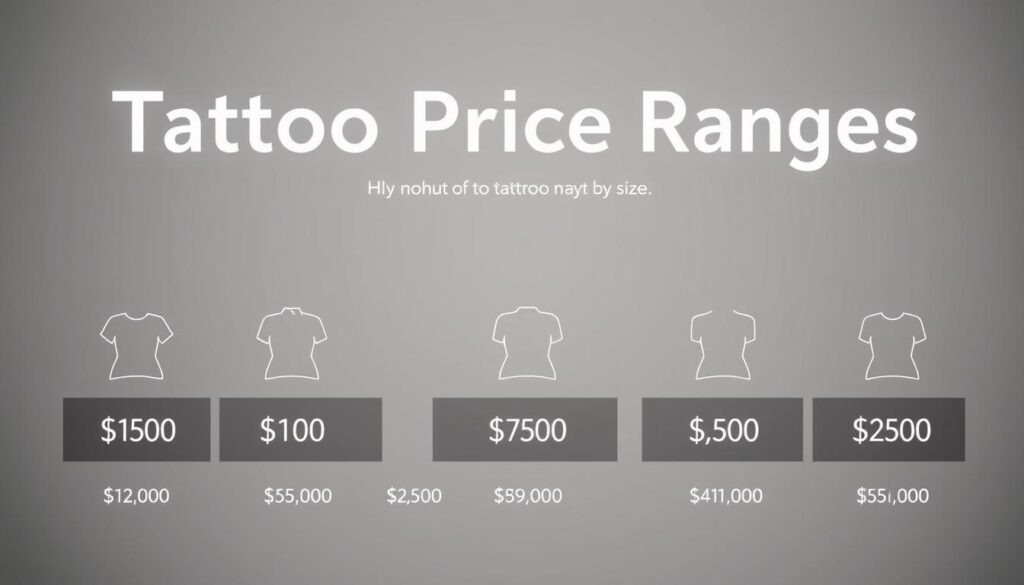
Planning your body art budget requires clear expectations. Prices swing dramatically based on two critical factors: physical dimensions and creative expertise. Let’s explore what shapes these numbers and how to gauge value.
Design Scope and Pricing Benchmarks
Miniature ink pieces—think subtle symbols or single-line designs—start around $50. These often fit within a 2-inch space, but prices climb to $200 with added size complexity like shading or delicate patterns. A 3-inch floral wrist tattoo might hit the middle of this range.
Mid-sized creations covering 4-6 inches, such as forearm quotes or shoulder mandalas, typically run $200-$800. Color saturation and layered elements push costs higher. “Vibrant hues demand multiple passes and specialized inks,” notes a Brooklyn-based artist.
Skill Level as a Value Multiplier
Novice professionals often charge $80-$150 hourly—ideal for straightforward projects. Seasoned specialists with waitlists frequently command $200-$500 hourly. Their expertise shines in precise linework and efficient execution, potentially reducing total session time.
High-profile artists justify premium rates through technical mastery and consistent results. While a social media-famous creator might charge $1,000 hourly, their work often requires fewer touch-ups. This balance of quality and durability makes experienced professionals a smart choice for complex or visible placements.
Comparing Tattoo Pricing by Studio and Location
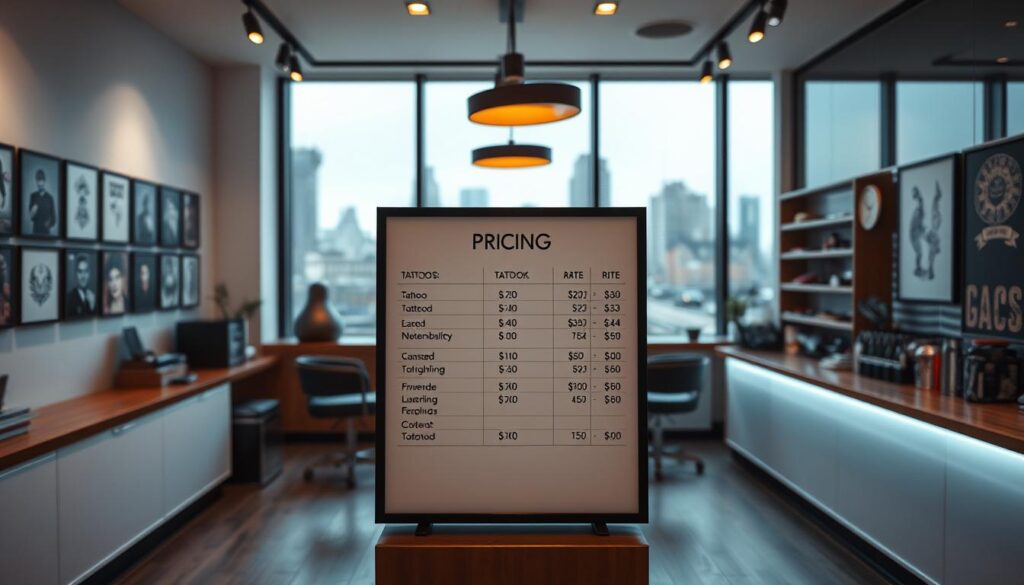
Your zip code might influence your ink bill more than you realize. Where you choose to get tattooed impacts costs through local economics and studio demands. Let’s explore how geography shapes your budget.
Regional Variations Across the United States
Coastal cities often set premium rates. Artists in Los Angeles or Boston typically charge $200-$300 hourly—double some Midwest shops. High living costs and client demand drive these prices. In contrast, studios in Kansas or Tennessee might offer similar quality at $100-$180 hourly.
| Region | Average Hourly Rate |
|---|---|
| West Coast | $150-$300 |
| Midwest | $100-$180 |
| Southeast | $100-$200 |
| Northeast | $150-$250 |
Studio Overhead and Local Market Trends
Trendy neighborhoods mean pricier ink. A Brooklyn studio pays $8,000 monthly rent versus $2,500 in suburban Ohio—differences reflected in hourly rates. Urban artists also face stiffer competition, sometimes lowering prices to attract clients.
Research matters. Small-town shops may offer deals, but verify their cleanliness standards and portfolios first. One Austin artist notes: “Clients save $50 driving to my satellite studio, but get the same expertise as downtown.”
Understanding these patterns helps you make informed choices. Balance location costs with artistic needs—sometimes traveling an hour saves hundreds without sacrificing quality.
Design and Customization: What Affects the Final Price
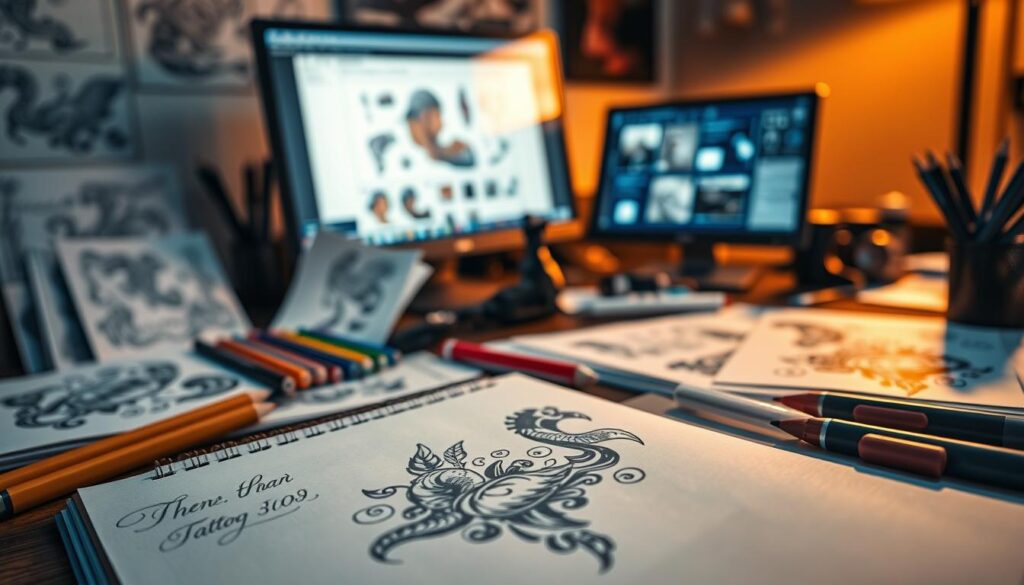
Your tattoo’s creativity level directly impacts your wallet. Custom artwork and color choices transform simple concepts into financial commitments. Let’s explore how personalization shapes your investment.
Custom Designs vs. Flash Tattoos
Original creations demand collaborative effort. Artists spend hours sketching concepts, revising layouts, and refining details. This process often adds $50-$200+ to your final price before needle touches skin.
Pre-made flash art skips the design phase. Studios display these ready-to-ink pieces at 20-40% discounts. You save money, but sacrifice uniqueness. One Chicago artist explains: “Flash lets clients walk in and out quickly—perfect for impulse decisions.”
Color Inks Compared to Black and Gray
Vibrant hues require time and precision. Each shade needs separate mixing and application. A five-color sleeve might take three sessions versus one for monochrome work. Needle changes between pigments add labor costs.
Black and gray designs use shading techniques that streamline the process. Fewer ink bottles mean faster transitions. However, complex grayscale portraits can still command premium rates depending on detail density.
Balancing originality with budget becomes crucial. While custom color pieces showcase individuality, simpler black flash designs offer affordability. Discuss options with your artist to align expectations with your final price range.
Budgeting for Your Tattoo Investment

Smart financial planning turns tattoo dreams into reality. Like saving for a vacation or car, body art requires strategic preparation. Let’s explore how to align your vision with practical spending habits.
Strategies for Setting a Realistic Budget
Start by researching artists who specialize in your preferred style. A geometric design specialist might charge differently than a watercolor expert. Add 25% to initial estimates for design tweaks or session extensions—unexpected changes happen.
| Budgeting Approach | How It Helps |
|---|---|
| Multi-Session Payments | Spreads costs over weeks/months |
| Artist Comparison | Identifies fair market rates |
| Emergency Fund | Covers touch-ups or aftercare |
| Seasonal Savings | Captures studio promotions |
Create a separate savings account labeled “Ink Fund.” Automatic monthly transfers build your balance painlessly. Pro tip: Many artists offer discounts for weekday appointments or winter sessions when demand drops.
Avoid bargain artists promising $50 sleeves. As one Miami tattooist warns: “You’ll pay triple later fixing blown-out lines.” Prioritize portfolios over prices—skilled work ages better and needs fewer touch-ups.
Discuss payment plans during consultations. Some studios let you pay 50% upfront and the rest post-session. This flexibility helps manage cash flow while securing your preferred appointment slot.
Navigating Additional Costs and Aftercare Expenses
Your tattoo journey doesn’t end when the needles stop buzzing. Hidden fees and healing essentials can surprise first-timers. Smart planning prevents sticker shock and ensures your art stays vibrant for years.
Pricing for Aftercare Products and Touch-Ups
Proper healing demands quality supplies. Budget $20-$50 for antibacterial soap, fragrance-free moisturizers, and specialized ointments. Premium options ($40-$80) often enhance color retention but aren’t mandatory.
| Essential Aftercare Items | Average Cost |
|---|---|
| Antimicrobial Wash | $8-$15 |
| Healing Balm | $12-$25 |
| SPF Tattoo Lotion | $18-$40 |
Most artists include one free touch-up within 60 days. After that, expect $100-$200 per session. “Sun exposure and skin type determine how often refresh work is needed,” notes a Nashville tattooist.
Consultation Fees and Custom Design Charges
Initial meetings ($50-$100) secure your spot and clarify design ideas. Many studios deduct this fee from your final bill if you commit. Custom artwork may require time for revisions—ask about hourly design rates upfront.
| Service | Typical Cost |
|---|---|
| Design Consultation | $75 (credited) |
| Complex Sketch Revisions | $30-$75/hour |
| Emergency Booking | +20% base rate |
Remember tipping etiquette—15-20% shows appreciation for artist experience. Pack these extras into your initial budget to avoid last-minute scrambles.
Utilizing Tattoo Price Calculators and Tools
Digital tools now simplify budget planning for body art enthusiasts. While not perfect, these resources help set realistic expectations before consulting artists. The best calculators balance technical precision with creative flexibility.
Features of an Effective Tattoo Price Estimator
Customization options separate great tools from basic ones. Look for sliders that adjust design size and placement. Color selectors should display price differences between black-gray work and vibrant palettes.
Top platforms integrate real-time adjustments. Changing from a geometric sleeve to a minimalist symbol recalculates costs instantly. Some even show regional averages, helping you compare local studio rates.
Reliable estimators include artist databases. These connect you with professionals specializing in your chosen style. “A good tool starts conversations,” says a Detroit-based ink specialist. Always verify results through studio consultations—human expertise still beats algorithms for complex projects.
